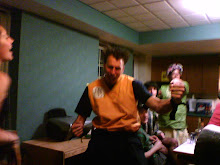Dan and Jim Meyer were my childhood friends. We discovered many ways to cause trouble and even more creative ways to stay out of it. We teepee’d our first house together, built forts in the woods, started fires, fell into the ice covered pond, flipped through the pages of our first porn, smoked our first cigarettes and drank our first beers together. Yes, Billary Beer. Sorry dad. I do not remember if you caught me on that one or not.
However, before all the shenanigans, we had a different passion. Super Mario Kart. It was 1992 and I had spent the night at the Meyer’s house. They had just got the first installment of one of Nintendo’s finest game series ever created. This spin-off of Super Mario Brothers would occupy a large part of my pre-adolescent and adolescent evenings. My parents never bought me a game council, perhaps hoping that I would focus on reading, writing, or sports. I was never much of a reader or writer. Math and science came natural to me and it took little effort to get by in my classes. I played soccer, baseball, and basketball during the day. In the evenings, it was off to the Meyer’s house for some heated battle mode or grand prix. Who would have thought that 16 years later Super Mario Kart would provide me with such a great analogy here in
It is mid-morning and I stand on the corner of Shu Dian Jie (
Peach has the poll position. She is a young graduate of the police academy. Her uniform is dark blue and she pulls her hair back into a ponytail. She is riding a silver electric-scooter. Peach is a novice rider with great ambition. To her right is Mario. He is a middle aged local driving an auto rickshaw, he carries one passenger today. His Kart is agile and swift. Luigi and Yoshi are set in the second row. Luigi is a second year student at
Directly behind him awaits the bruiser known as Bowser. Bowser drives a blue cab. His Kart is slow, but not to worry, this man has navigated the chaotic streets of
The little cloud man swoops down to wave the starting flag. The light flashes red, then yellow, then green. They’re off! Peach spins her tires into a stall. She hasn’t mastered the timing for the jump start. Mario, Toad, and Bowser nail the start and jump out front, neck and neck. Bowser and Toad are in a heated match for the lead. Bowser’s experience shines on this day. He gives toad the inside lane. Out of nowhere, a bus squeals into the intersection. Toad has two choices; slam on the breaks or slam into the bus. He hits the breaks and Bowser takes the lead!
The racers have not yet crossed the intersection and it is too early to count anyone out. Yoshi, Koopa Troopa, and Donkey Kong are in a dead heat. None hit the jump start, none stalled. Yoshi, with his speedy Kia, inches ahead. Donkey Kong puts his weight into the battle and forces Koopa Troopa onto the shoulder. Luigi relies on strategy, he drafts Donkey until he peddles up enough speed and momentum for an overtake. Yoshi has caught up to the slower Bowser who is preoccupied with his quest for a passenger. Yoshi swerves in and out of the lanes, waiting for the right moment to take the lead. Just then, a pedestrian jumps into the lanes of traffic. Bowser hits the breaks, Yoshi strafes left and puts the peddle to the metal.
Hurling into the first turn it is Yoshi with the lead! Followed closely by Mario and Luigi. Nipping at their heals are Donkey Kong and Peach. Koopa Troopa is far behind but gaining ground with his slowly but surely strategy. Toad is nowhere to be found after dodging the bus and ducking off into a side road. Bowser has picked up a passenger and pulls a U-banger; I think this race is over for him as well. I decide to leave the race and continue with my day. The light changes again and the crossing guard waves me through. I think I’ll check out the morning snacks at Gu Lou.
